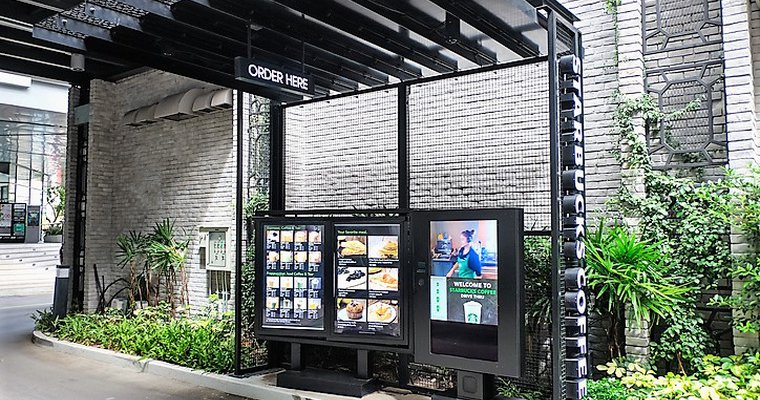
Is it possible to go back to where we were before COVID-19? The limited foodservice and self-service kiosk industries will never be the same, and that may be for the better.
Prior to March 17, when all restaurants throughout the U.S. were ordered to close their dine-in options, restaurants with drive-thru options generally showed 70% of revenues came through their drive-thru. Now, these restaurants are reporting over 90% of all revenue is going through their drive-thrus.
Furthermore, restaurants without drive-thrus are operating 100% through pick-up, delivery or make-shift drive-thrus. Delivery will not remain free long-term, and viability through existing third-party channels and fees may be short lived.
Here is my vision of where the restaurant industry must reinvent itself and how kiosks can help make it happen.
1. Kiosks with voice ordering. Having a voice ordering system allows a contactless, no-touch transaction that customers will demand in a post COVID-19 world. Furthermore, it eliminates any issues with ADA height and reach guidelines. Inside stores, customers may not want to have their order spoken out loud via speakers and overheard by others. (“Three apple pies and a Diet Coke!”) But having directional speakers within the kiosk ordering system creates a private ordering experience for each user, yielding higher customer satisfaction and average ticket values. Customers could also seamlessly pair their phones to the kiosk or loyalty app to verbally speak with an AI device to place their order.
One voice ordering technology provider recently announced an AI powered solution that places orders directly into the point of sale. This improves the restaurant’s speed of service, increasing revenues. At the drive-thru, customers place an order the same way they are accustomed to, by pulling up in their car and talking into the speaker post. However, instead of speaking with a person, the POS is now making sure their experience is a pleasant one. Maybe even better!
2. Geofencing. A restaurant needs to be able to predict and verify their customer’s buying patterns in relation to their stores. Proximity marketing can be so much more than surveys or advertisements.
Once an opt-in loyalty customer enters the 1- to 3-mile area around a restaurant, the restaurant should be immediately aware that their loyal customer, who visits the restaurant one to five times a week, will be coming to get their regular order. This should enable restaurants to predict loyal customer orders and assign them a parking slot to serve them without tying up their drive-thru. This allows the drive thru to be used more for first-time visitors before they opt in to a program to serve them as a valued customer as well.
3. Phone pairing to the kiosk/POS system. By allowing a customer to open a phone app or scan a QR code on the kiosk or somewhere in the restaurant, a consumer should be able to interface with the ordering system without the need to speak to a cashier, creating a contactless ordering experience.
Phone pairing also allows hearing and visually impaired customers to use their own devices, which are the most accessible devices in the world. Needless to say, an app needs to be accessible in how it’s programmed, but that hasn’t really been affected by the COVID-19 pandemic we’re experiencing today.
4. Integrated electronic payment solutions. Phone pairing and phone apps allow for the customer to use their Google/Android/Apple Pay solutions seamlessly within their apps.
So let’s storyboard a plausible scenario to improve service and still speed up the process.
The drive-thru conversion
I go to the same McDonald’s for breakfast at least three times a week, and I always get the same things: Two Egg McMuffins and Diet Coke. They also know that I like four packs of ketchup and two mustards with my meal, because I have put it into my profile.
The restaurant’s geofencing picks up that I am within three miles of the building. At one mile, the system checks inventory of Egg McMuffins and sends me a voice notification in the McDonald’s app welcoming me to the area, and asks via voice AI to confirm that I am en route to the store today. Now the AI ordering of the future kicks in and, upon my confirmation, my normal order gets spoken back to me and upsells me to add a hash brown and a drink.
Then the AI asks me if I want to use the Apple Pay that I have already registered with the app. Order and payment is seamless and the app directs me to a parking spot to pick up my order, saving me time from going in the store or through the drive-thru.
Now, you might say, “I’m driving and I don’t want that much distraction.” This experience, however, is completely hands free, and is similar to talking with your friend in the seat next to you or on the phone. Also, the first interaction happens when you pull into the parking lot and trip the geofence. You’re answering all the same questions you would through a drive-thru, except you’re now using your phone or your car’s Bluetooth to get your food much faster with improved order accuracy.
I am convinced that fully opted-in loyal customers would jump at the chance to get their order started long before they wait to get to a speaker box.
Part two in this series will explore how self-service technology will benefit the less tech savvy customers.
